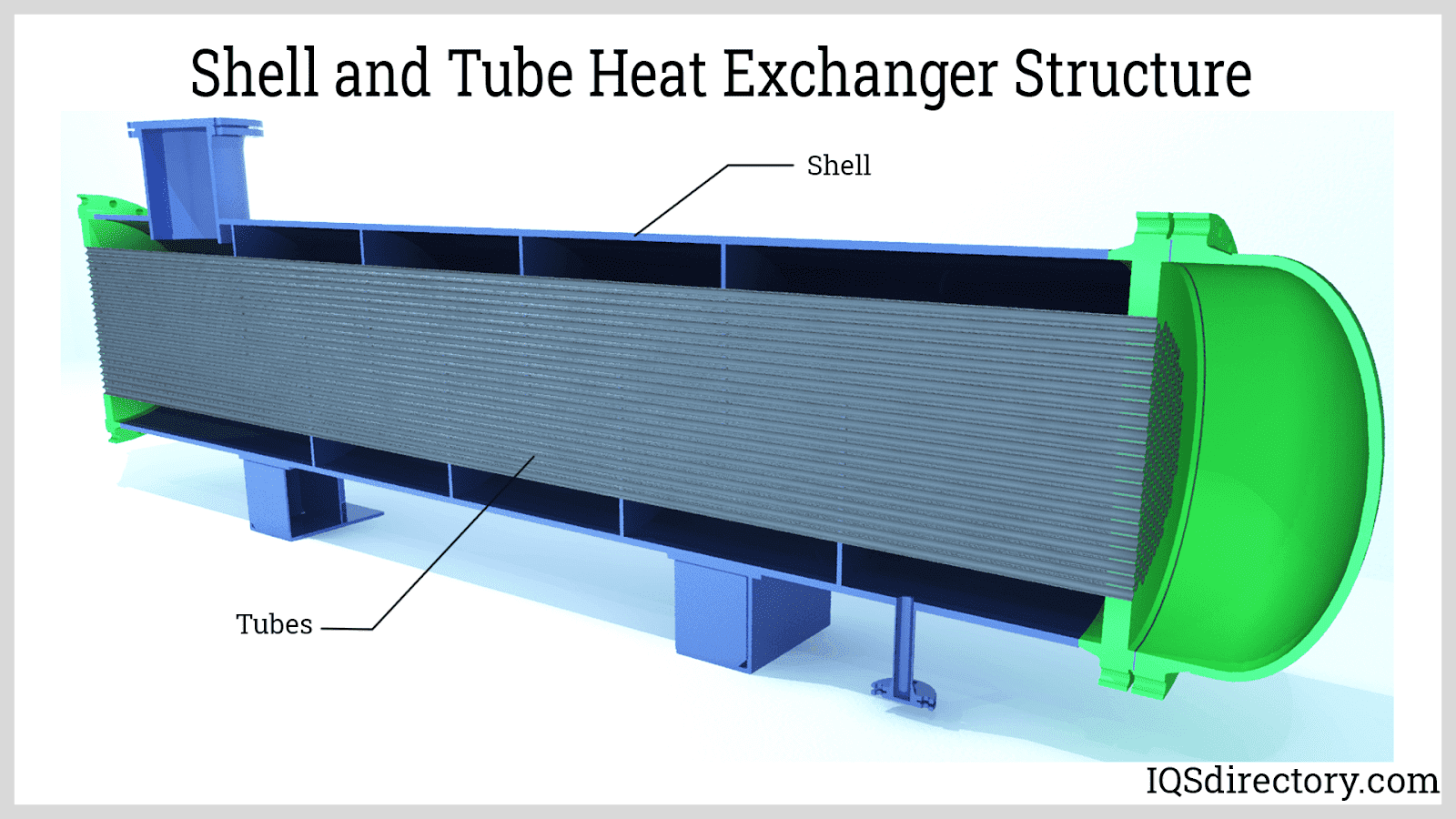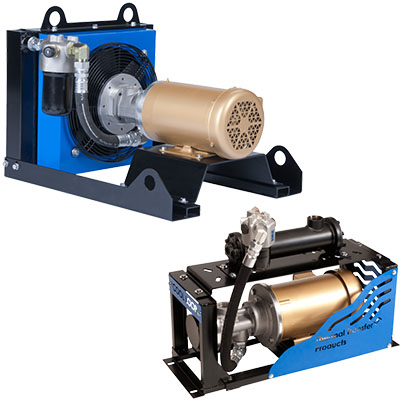A Comprehensive Overview to Selecting the Right Heat Transfer Equipments for Your Requirements
Picking the ideal Heat transfer system is crucial for operational performance. Different systems cater to different needs, affected by elements such as temperature array and fluid kind. Understanding the concepts behind Heat transfer, such as convection, transmission, and radiation, is critical. Furthermore, assessing power sources and upkeep practices can affect lasting efficiency. A closer exam of these factors to consider reveals how to customize a system to specific requirements. What should one prioritize in this complex decision-making procedure?
Comprehending Heat Transfer: Trick Ideas and Concepts
Although Heat transfer may appear like a straightforward principle, it includes a range of principles that are essential for reliable system style. Comprehending these principles is important for designers and engineers that aim to optimize thermal performance in different applications. Conduction, for instance, includes the transfer of Heat with solid materials, while convection describes the activity of Heat within fluids. Radiation, one more key concept, describes how Heat can be transferred with electromagnetic waves. Each of these mechanisms plays a crucial duty in identifying exactly how power moves within a system. By completely comprehending these ideas, specialists can make informed decisions, ensuring that Heat transfer systems operate effectively and satisfy the details demands of their applications
Sorts Of Heat Transfer Solutions: An Overview
Understanding the principles of Heat transfer lays the foundation for discovering the various kinds of Heat transfer systems available. Heat transfer systems can be classified primarily right into three types: convection, conduction, and radiation. Conduction includes Heat transfer with strong materials, relying upon direct call in between bits. Convection, on the other hand, takes place in fluids (liquids and gases) where the motion of the liquid itself assists in Heat transfer. Radiation involves the transfer of Heat with electromagnetic waves and does not require a tool, permitting it to happen in a vacuum. Each kind of system has distinct characteristics and applications, making it crucial for people and organizations to thoroughly assess their details needs when picking the most suitable Heat transfer solution.
Applications of Heat Transfer Equipments in Various Industries
Heat transfer systems play an essential duty across various industries, influencing performance and product high quality. In commercial production procedures, they facilitate exact temperature control, while in food and beverage processing, they ensure safety and security and preservation. Furthermore, HVAC and environment control systems rely heavily on effective Heat transfer to keep comfortable settings.
Industrial Manufacturing Processes

Various industrial manufacturing procedures rely greatly on reliable Heat transfer systems to maximize productivity and improve product quality. In industries such as metalworking, Heat exchangers play a crucial function in keeping suitable temperatures throughout welding, casting, and forging. These systems assure uniform Heat circulation, which is important for attaining desired product residential properties. In the chemical production industry, Heat transfer systems help with exact temperature level control throughout reactions, influencing yield and security. In textile manufacturing, effective Heat administration is vital for dyeing and completing processes, affecting shade consistency and fabric top quality. By picking suitable Heat transfer technologies, manufacturers can enhance energy effectiveness and decrease functional expenses, ultimately bring about a more competitive and sustainable production atmosphere.
Food and Drink Handling
Reliable Heat transfer systems are similarly important in the food and drink processing market, where maintaining perfect temperature levels is critical for food security and top quality. These systems play an important role in procedures such as pasteurization, food preparation, and sterilization, making sure that products are risk-free for consumption and maintain their dietary value. Heat exchangers, for example, effectively move Heat between fluids, optimizing power usage while minimizing temperature level fluctuations. Furthermore, refrigeration systems are basic for expanding and maintaining perishable products service life. The option of Heat transfer technology straight influences functional performance and item integrity, making it vital for food and drink manufacturers to select the appropriate systems tailored to their certain handling needs. This careful choice ultimately adds to customer fulfillment and food security.

A/c and Climate Control
While several industries rely upon Heat transfer systems for effectiveness, HVAC (Heating, Ventilation, and Air Conditioning) plays an essential function in keeping interior environment control across different settings. These systems use Heat transfer principles to manage humidity, temperature, and air quality, making sure convenience and safety and security in household, commercial, and commercial environments. Effectively developed HVAC systems enhance power effectiveness, minimize functional prices, and lessen ecological effect. In industrial structures, for instance, effective environment control adds to employee performance and consumer complete satisfaction. In commercial applications, HVAC systems help maintain suitable problems for devices procedure and item conservation. Selecting the best Heat transfer system is essential for meeting certain climate control requirements and achieving total system efficiency.
Assessing Energy Resources for Heat Transfer Systems
In evaluating power sources for Heat transfer systems, a contrast of renewable resource options and nonrenewable fuel source considerations is vital. Sustainable sources, such as solar and wind, deal sustainable choices that can minimize ecological effect. On the other hand, fossil fuels stay prevalent because of their established framework and power thickness, motivating a careful evaluation of both choices.
Renewable Resource Options

Nonrenewable Fuel Source Factors To Consider
Evaluating nonrenewable fuel source factors to consider is important for the effectiveness and sustainability of Heat transfer systems. Fossil gas, such as gas, oil, and coal, are conventional power sources that supply significant Heat outcome, making them popular selections for residential and industrial applications. However, their environmental influence, consisting of greenhouse gas exhausts and resource deficiency, elevates issues. When choosing a warm transfer system, it is crucial to assess the accessibility, price, and regulatory elements related to these fuels. Furthermore, the performance of fossil gas systems need to be thought about, as greater performance can mitigate some environmental drawbacks. Inevitably, a balanced technique considering performance and sustainability can guide decision-makers toward the most ideal Heat transfer option for their certain demands.
Variables to Consider When Selecting a Warm Transfer System
Selecting a proper Heat transfer system needs mindful factor to consider of different aspects that can significantly affect performance and efficiency. One crucial factor is the operating temperature level array, which determines the products and layout suitable for the application. Furthermore, the kind of liquid used in the system-- whether gas or liquid-- affects Heat transfer performance and compatibility. The system's dimension and capability need to straighten with the weblink details demands of the procedure to avoid inadequacies. Energy resource availability is likewise essential, influencing operating expense and sustainability. Additionally, the installation environment, including room constraints and accessibility for upkeep, plays a substantial role in system selection. Finally, regulatory compliance and safety requirements have to be thought about to guarantee the system meets all lawful demands.
Maintenance and Performance Optimization for Heat Transfer Equipments
Maintaining Heat transfer systems is necessary for making certain optimal efficiency and long life. Regular upkeep activities, such as cleaning up Heat exchangers and checking insulation, help stop effectiveness losses because of fouling and thermal linking. Additionally, keeping an eye on system parameters, consisting of stress and temperature, enables very early detection of abnormalities, minimizing downtime and expensive repairs. Applying a preventive upkeep schedule can maximize efficiency and expand the lifespan of components. Updating to advanced control systems can improve functional efficiency by adjusting to varying loads and conditions. By prioritizing upkeep and effectiveness optimization, operators can accomplish lowered power consumption, reduced operational expenses, and boosted general system dependability, inevitably resulting in much better source use and an extra lasting procedure.
Future Patterns in Heat Transfer Technologies
As industries increasingly prioritize sustainability and power performance, future trends in Heat transfer modern technologies are readied to go through significant transformations. Advancements such as innovative materials, consisting of carbon nanotubes and nanofluids, guarantee enhanced thermal conductivity and performance. Additionally, the assimilation of renewable resource resources right into Heat transfer systems is obtaining energy, promoting environmentally friendly remedies. Smart innovations, including IoT sensing units, are anticipated to change monitoring and control, enabling real-time information analysis for optimized efficiency. The development of modular and portable systems will facilitate less complicated installation and maintenance, catering to diverse applications. These developments suggest a shift in the direction of even more sustainable, reliable, and adaptable Heat transfer services, lining up with global power objectives and environmental criteria.
Regularly Asked Concerns
What Are the Environmental Effects of Heat Transfer Systems?
The ecological impacts of Heat transfer systems can consist of greenhouse gas discharges, power consumption, and potential thermal pollution. Furthermore, inappropriate disposal of ineffectiveness and materials can add to resource deficiency and ecosystem interruption.
Exactly how Do I Compute the Cost-Effectiveness of a Warm Transfer System?
To compute the cost-effectiveness of a warmth transfer system, one need to analyze first expenses, operational expenditures, maintenance needs, and power performance, contrasting these aspects versus the anticipated life-span and efficiency of the system.
Can Heat Transfer Systems Be Made Use Of in Residential Settings?
Heat transfer systems can undoubtedly be made use of in property setups. They give reliable home heating and cooling down services, making homes extra comfy while possibly lowering power prices. Their adaptability permits for different applications in residential atmospheres.
What Safety And Security Laws Relate To Heat Transfer Equipments?
Safety and security laws for Heat transfer systems commonly consist of standards on procedure, upkeep, and setup. Conformity with neighborhood building codes, supplier requirements, and sector requirements is important to ensure effective and safe system performance in numerous applications.
Just How Do Different Products Affect Heat Transfer Efficiency?

Transmission, for instance, entails the transfer of Heat with solid materials, while convection refers to the activity of Heat within fluids. Recognizing the concepts of Heat transfer lays the foundation for discovering the different kinds of Heat transfer systems offered. Heat exchangers, for instance, effectively move Heat between liquids, optimizing power usage while minimizing temperature variations. In reviewing power resources for Heat transfer systems, a comparison of sustainable energy alternatives and fossil gas factors to consider is important. Steels, such as copper and light weight aluminum, conduct Heat successfully, whereas insulators like rubber and over at this website glass reduce down Heat circulation.